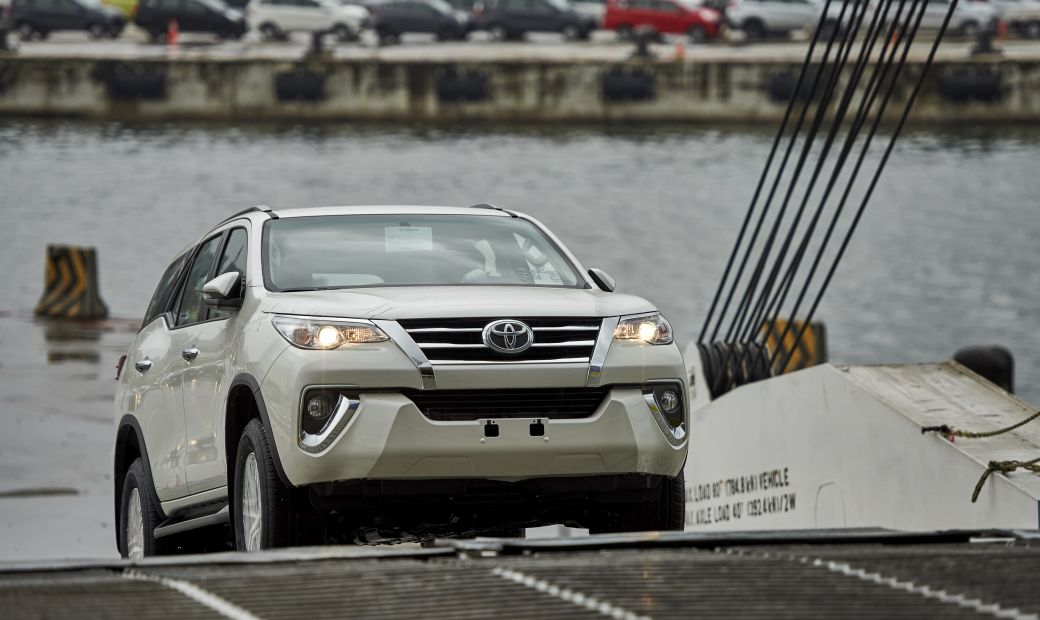Please fill in some of the data provided below to receive the latest Toyota-related news and information in your email.


In the past decade, Indonesia has been eyed by many automotive principals to premiere their global products. The desire to grab a big market share in Indonesia has triggered a number of manufacturers to design products that will sell well in the domestic market.
However, such local products have yet to help boost the national export although they have been claimed to be owned only by manufacturers in Indonesia, which actually could highlight the country’s position in the global supply chain.
This fact indeed proves that the attempt to export is not easy. The success in export is an achievement.
Manufacturers not only fulfill the prerequisites as an automaker, but also have a research and development team that can assess the overseas demand and the compatibility of products in the global market. In fact, the demand for global products varies in accordance with the taste of consumers and their purchasing power.
The story of Toyota Indonesia in paving the way to export at least gives many lessons. With a complete range of products in various segments, it is also strengthened by complete production facilities from stamping and casting plants to engine and assembly plants which allow the company to produce vehicles from sheet metal to completely-built up vehicles.
Furthermore, Toyota Indonesia also can design domestic and global marketing strategies simultaneously. Since 2003 its manufacturing as well as export and import has been handled by Toyota Motor Manufacturing Indonesia (TMMIN), proven to strengthen the production chain and global marketing network.
The first export of Toyota vehicles from Indonesia took place in 1987. The exported model was the third generation of Kijang, better known as Kijang Super. The destinations were Brunei Darussalam, Papua Guinea, and Pacific Islands countries, such as Fiji, Vanuatu and Solomon.
At the same time, Toyota Indonesia also shipped engines used in Kijang (5K engines) to Japan and automotive components of Kijang to Malaysia, Thailand and the Phillippines where they were then assembled.
At the end of 1990s Toyota began to export Kijang in the form of completely-knocked down (CKD) units to several countries. It was preceeded by the establishment of Packing and Vanning Division tasked with packing export items.
A strategic leap occurred in 2004. Toyota Indonesia managed to boost export after being trusted to produce Kijang Innova. The number of the exported vehicles significantly multiplied from dozens to thousands each month.
From planning to execution of export, Toyota Indonesia strengthened many aspects of its business. A team led by TMMIN studied and grasped opportunities provided by the global demand because each market was unique. Future export products were adjusted to the specific demand in each market.
For example, Kijang Innova, which was designed as a family car, actually do not match with most foreign countries as people there rarely board a car together. However, Innova is a favorite in the Middle East.
Avanza has similar characteristics with Innova, but because the price of the former is cheaper, it finds a market more easily. In Brunei Darussalam, for example, Kijang is widely used for business purposes, particularly to carry goods on its back seats.
The organization of export management owned by TMMIN is already sufficient to help it increase its export like what is seen at this moment. Apart from that, there is a challenge related to export logistics. Outbound shipment also requires the foresight and development of technology in packing and packaging the products.
Furthermore, Toyota Indonesia provides export products with after-sales service, including a special technical team. For the whole process, TMMIN takes a full responsibility by posting many of its experts in various export destinations. Inevitably, Toyota Indonesia has been experienced in export affairs. For sure, its export journey for more than three decades, is inseparable from the support of Toyota Motor Corporation (TMC) as the principal which has trusted Indonesia as one of its production base in Asia Pacific region. Moreover, the support from Indonesian government in enhancing the competitiveness of the industry is also one of the factors determining the sustainability of Toyota export performance.
#Ekspor, #Ekspor Toyota, #Ekspor CBUMedia/Journalist Contact : [Memuat email...]
Non Media / Non Journalist Contact : [Memuat email...]

© 2024 Toyota Motor Manufacturing Indonesia. All Rights Reserved.
